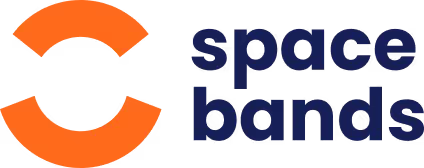
spacebands is a multi-sensor wearable that monitors external, environmental hazards, anticipates potential accidents, and gives real-time data on stress in hazardous environments.
Sign up to the mailing list:
Subscribe


Our latest industry expert is Peter Upcott, Owner/Director of PPE Specialist, a personal protective equipment consultancy business, specializing in product innovation and business development. PPE Specialist assist PPE manufacturers to bring innovative product solutions to market.
What to expect from the webinar: In this episode of spacebands' webinar series, a PPE (Personal Protective Equipment) expert discusses his extensive experience in the PPE industry, spanning 36 years.
He elaborates on his consultancy business, which specializes in product design, compliance, project management, marketing, and commercialization of brands. Peter shares insights into the regulatory and design aspects of PPE, the challenges of compliance, and the importance of risk assessments in selecting appropriate PPE. He also touches on trends in the industry, such as the development of recycled products and PPE designed specifically for women.
Personal Protective Equipment (PPE) plays a crucial role in ensuring the safety and well-being of workers across various industries. Over the past 35 years, the PPE industry has seen significant changes and faced numerous challenges. This article delves into the evolution of PPE, the regulatory landscape, common workplace mistakes, and emerging trends.
PPE specialists provide consultancy services to manufacturers and distributors, focusing on product design, compliance, project management, marketing, and commercialization. With decades of experience, these experts support the industry by adding expertise where it is lacking, particularly in areas like respiratory, eye, and head protection.
Compliance is a critical aspect of the PPE industry. Standards for PPE take between five and ten years to develop, making it a slow process. Once new standards are published, manufacturers have an 18-month window to comply. The regulatory bodies and audit processes vary by country, with the USA and Europe having the most influential standards. Compliance audits can occur at the factory level or involve retesting the actual product.
PPE is distributed worldwide, with standards differing across regions. While some products can meet both USA and European standards, others, like respiratory protection, have significant differences. Distributors play a vital role in influencing what products users buy, often based on what they stock and trust.
One of the riskiest areas in workplaces is working at height. Many smaller contractors do not take this seriously, often working without any protection. This lack of understanding or improper training can lead to severe accidents. Another common issue is the reluctance to use respiratory and hearing protection, as the effects of not using them are long-term and not immediately noticeable.
Several trends have emerged in the PPE industry over the past decade:
Risk assessments are fundamental in selecting and deciding on PPE. They help identify workplace hazards and determine whether PPE is necessary. PPE should always be the last resort after attempting to eliminate or control the hazard through other means.
One of the significant challenges in the PPE industry is the presence of non-compliant products. These products often lack proper testing, labeling, and certification, posing risks to users. Ensuring that only compliant products are available in the market is crucial for safety.
The PPE industry has evolved significantly, with increased innovation and a broader range of products. However, challenges like compliance and the presence of non-compliant products remain. By focusing on education, training, and providing choices, the industry can ensure better safety and comfort for workers.
For more information or consultancy services, visit PPE Specialist or contact Peter at peter@ppe-specialist.com.
We think you'll also find the articles below really useful
Join 5,000 H&S professionals and sign up for the spacebands monthly newsletter and get the latest blogs, free resources, tools, widgets and a dose of health & safety humour.

spacebands is a multi-sensor wearable that monitors external, environmental hazards, anticipates potential accidents, and gives real-time data on stress in hazardous environments.
